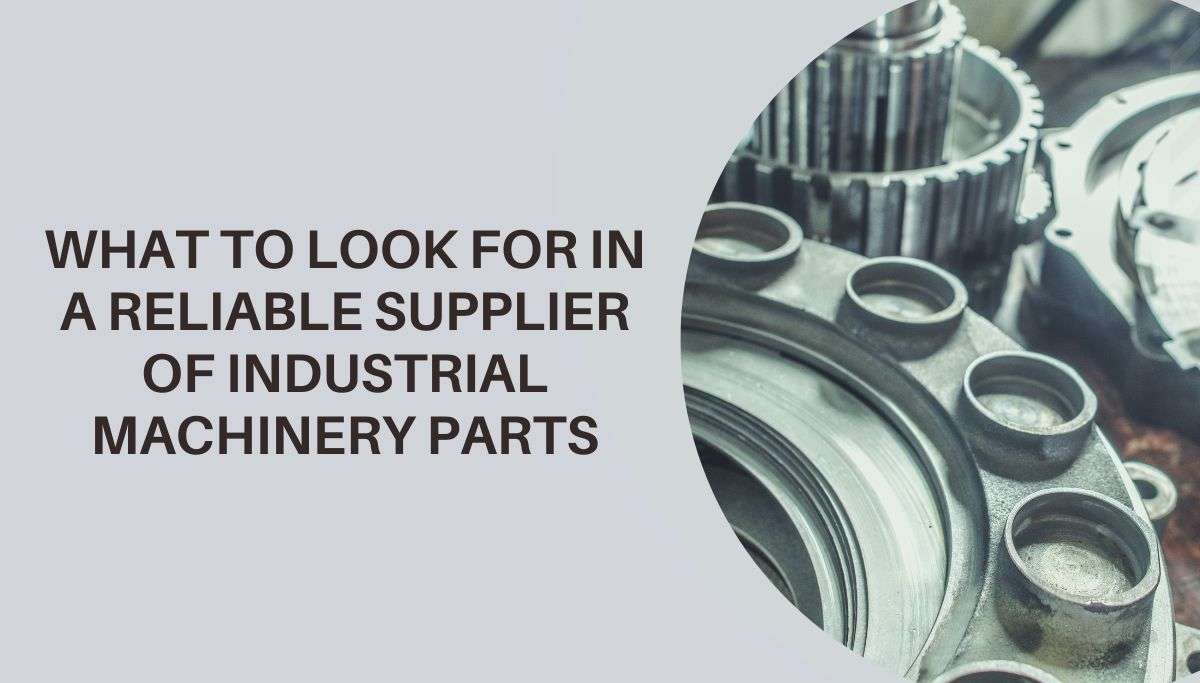
Feb 22,2024
Industrial machinery parts form the backbone of manufacturing operations, which ensures efficiency, productivity, and overall functionality. Your choice of a reputable provider for these parts might significantly impact the success and lifespan of your industrial gear.
In this blog post, we'll go over the most important things to consider when selecting an industrial equipment parts provider so you can make an informed choice that suits your operating requirements.
It is essential to have a clear grasp of your needs for industrial machinery parts before starting the supplier selection process. Assess the specific needs of your machinery, considering compatibility, specifications, and any unique features essential for seamless integration. Additionally, consider your long-term needs to ensure the chosen supplier can meet your evolving requirements.
The quality of the parts used in industrial gear directly affects the functionality and lifespan of your equipment. Look for suppliers who strictly follow the industry standards and possess the required certifications as examples of stringent quality control measures. Real-world case studies highlighting the positive impact of high-quality parts can provide valuable insights into a supplier's commitment to excellence.
Researching the background of potential suppliers is a crucial step in the decision-making process. Examine their standing in the market and look for customer endorsements and reviews. A respectable supplier is more likely to provide dependable and consistent service.
A reliable supplier should boast a diverse inventory of industrial machinery parts. Assess the availability of stock to avoid disruptions to your operations. Additionally, consider suppliers specializing in specific parts, as they may offer a more focused and comprehensive selection.
Effective communication and customer support are vital components of a successful supplier relationship. Evaluate the supplier's communication channels and assess their commitment to 24/7 support, especially in emergencies. Suppliers offering customization and consultation services can add significant value to your overall experience.
Although price is an important consideration, affordability and quality must be balanced. Transparent pricing structures help you make informed decisions, and considering long-term costs, such as maintenance and replacement, is integral to budgetary planning.
Efficient supply chain management is critical to avoiding downtime and delays. Evaluate the supplier's logistics capabilities and ability to adhere to agreed-upon delivery timeframes. Ensure they have robust policies in place to handle urgent requests promptly.
Understanding the warranty terms a supplier offers is essential for mitigating risks associated with potential defects. Clear return and replacement policies contribute to a hassle-free experience in the event of issues with the delivered parts. Explore case studies that showcase the supplier's commitment to fulfilling warranty obligations.
A forward-thinking supplier is more likely to keep pace with industry advancements. Assess the supplier's investment in technology and their compatibility with emerging innovations. Choosing a supplier that embraces technological advancements can contribute to the future-proofing of your machinery.
Evaluating a supplier's sustainability practices is becoming increasingly important as environmental consciousness grows. Please consider their dedication to sustainable practices, such as recycling programs and eco-friendly products, as well as the effects of their activities on the environment.
Choosing a reliable supplier for industrial machinery parts is a decision that requires careful consideration. By understanding your machinery needs, prioritizing quality assurance, and assessing factors such as supplier reputation, inventory availability, and sustainability practices, you can make an informed decision that positively impacts your operations.
Regularly evaluating your supplier relationships and providing feedback ensures ongoing success in the dynamic landscape of industrial machinery.